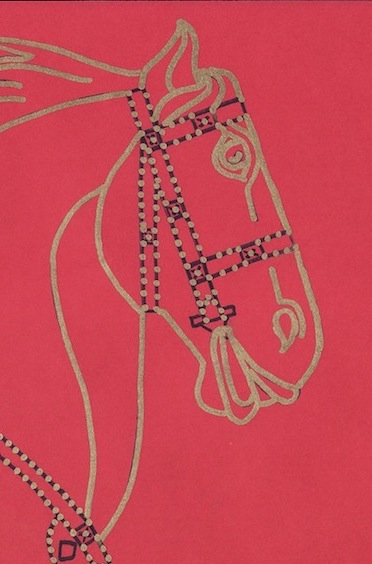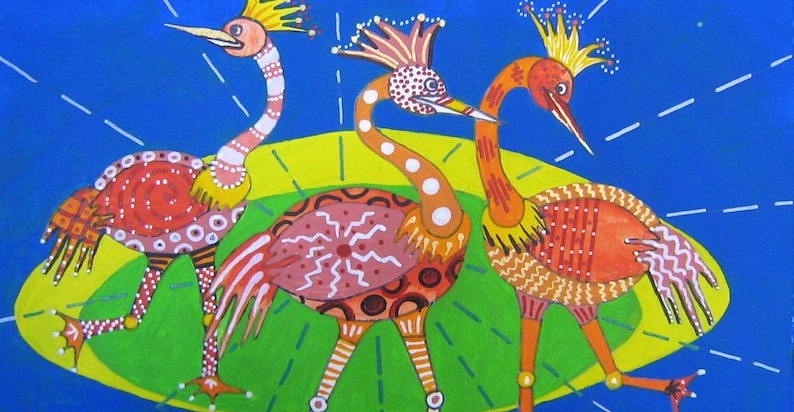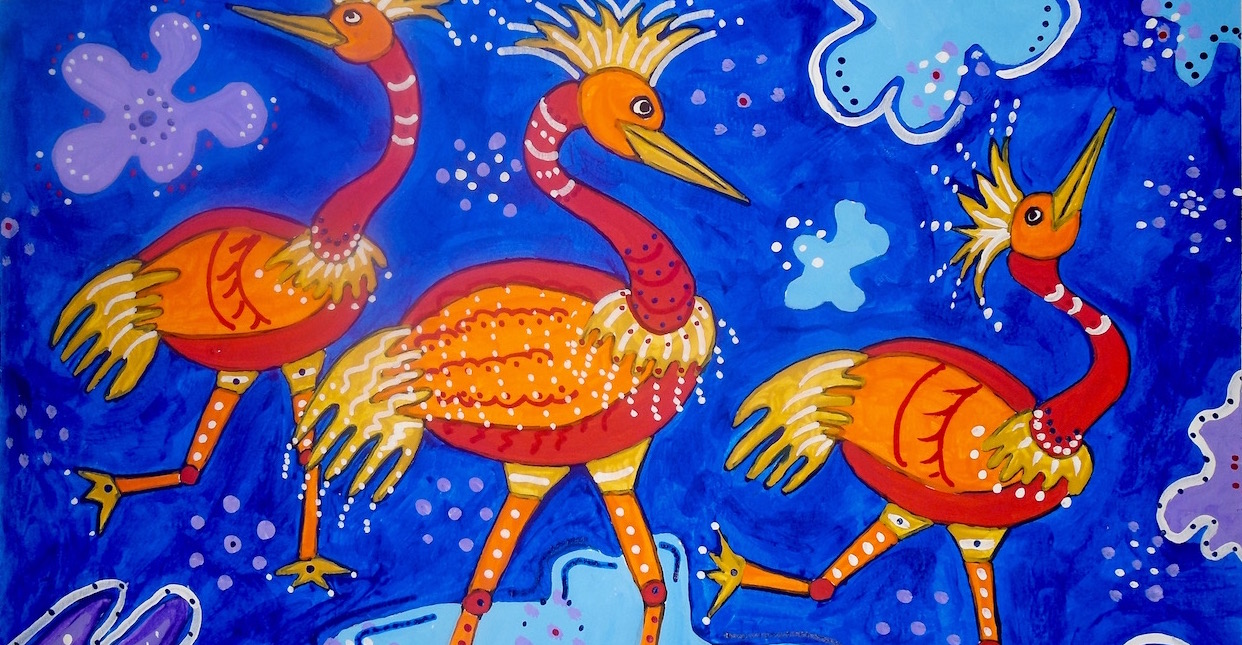Two Approaches To Doing an Art Lesson Over
When I was in elementary school, my piano teacher, Mrs. Vollink, used a thumbs-up/thumbs-down approach to teaching piano.
Her way of commenting on my playing was to mark the music with pencil marks as she pointed out wrong notes or the strengths and weaknesses in my rhythm or dynamics. Often I’d have to replay a passage to show I had absorbed the instruction.
When all comments and replaying were finished, there was one other, concluding comment.
It was the BIG one.
If my work was satisfactory, she would turn the page, and introduce a new piece of music. It was her way of saying “Good Job!”
Her way of saying I hadn’t practiced enough was equally understated: I would have to do the piece over for the next lesson.
Sometimes we think of redoing work - art lessons, music lessons, or any other thing that takes skill - in these same terms:
-
Doing well = you have succeeded and can go on to something new, and
-
Doing poorly = you have failed and have to do it over.
I was reminded of the faultiness of that kind of thinking twice during the past week. One time was the morning when a mother and son hailed me as they walked out of the local public radio station’s studios. The son had just finished playing a Chopin etude live on the air as part of Musicfest Northwest, a local showcase for high-achieving young musicians.
The mother was beaming. “He played the Chopin piece he’d been working on all year, and the radio host just sat there nodding his head in approval. He was nervous, but that whole year of practice paid off, and his piano just sang!”

Imagine: playing that Chopin piece a whole year.
-
How many musical discoveries that boy must have mined from the pages as he played the Chopin’s music over and over.
-
How many times he must have tried it this way, and then that: little experiments to see what feeling he could coax out of those chords.
As I listen to the mother, I started thinking about applying the boy’s approach to piano - doing it over and over and over - to art lessons. I suspect it’s rather ordinary to think of an art lesson like I thought about piano lessons:
-
If the art turns out “OK,” we can go on to the next lesson, but
-
If it turns out in a disappointing fashion, we might have to do it over.
However, it might be beneficial to think of art lessons in the way the young Chopin player thought of his piano.
What would happen if we took the young pianist’s approach, and did the an art lesson over
-
to discover what possibilities might remain in the lesson, or
-
to advance a technical skill, or
-
to see what we can make the image say if we did it just slightly different.
This week as I remade one of the ArtAchieve lessons into a movie, I was reminded of these alternative ways of thinking about redoing an art lesson. My wife commented that “the new versions of the art lessons are always more interesting than the original versions.
And why shouldn’t they be better? When I remake a lesson, I have to do the art project over, and as I do, I notice things about the object, about the culture it came from, or about the art technique that I hadn’t noticed before.
The result? The new piece usually is more nuanced, more layers of information, etc., and it almost always looks more exciting.
Here are the first and second versions of The Chinese Horse’s Head.
|

|
|
2nd Version
|
|

|
|
1st Version
|
And here are the first and second versions of The African Crane.


In each case, the art project was more fun for me the second time; I also like the second version better in each case. So let me encourage you to do the same.
After you do an art lesson, put it aside for a while, but then DO IT OVER!
See what new discoveries you make. If your experience is like mine, you’ll be surprised how much you and your project will grow and develop.
When I was in elementary school, my piano teacher, Mrs. Vollink, used a thumbs-up/thumbs-down approach to teaching piano.
Her way of commenting on my playing was to mark the music with pencil marks as she pointed out wrong notes or the strengths and weaknesses in my rhythm or dynamics. Often I’d have to replay a passage to show I had absorbed the instruction.
When all comments and replaying were finished, there was one other, concluding comment.
It was the BIG one.
If my work was satisfactory, she would turn the page, and introduce a new piece of music. It was her way of saying “Good Job!”
Her way of saying I hadn’t practiced enough was equally understated: I would have to do the piece over for the next lesson.
Sometimes we think of redoing work - art lessons, music lessons, or any other thing that takes skill - in these same terms:
-
Doing well = you have succeeded and can go on to something new, and
-
Doing poorly = you have failed and have to do it over.
I was reminded of the faultiness of that kind of thinking twice during the past week. One time was the morning when a mother and son hailed me as they walked out of the local public radio station’s studios. The son had just finished playing a Chopin etude live on the air as part of Musicfest Northwest, a local showcase for high-achieving young musicians.
The mother was beaming. “He played the Chopin piece he’d been working on all year, and the radio host just sat there nodding his head in approval. He was nervous, but that whole year of practice paid off, and his piano just sang!”

Imagine: playing that Chopin piece a whole year.
-
How many musical discoveries that boy must have mined from the pages as he played the Chopin’s music over and over.
-
How many times he must have tried it this way, and then that: little experiments to see what feeling he could coax out of those chords.
As I listen to the mother, I started thinking about applying the boy’s approach to piano - doing it over and over and over - to art lessons. I suspect it’s rather ordinary to think of an art lesson like I thought about piano lessons:
-
If the art turns out “OK,” we can go on to the next lesson, but
-
If it turns out in a disappointing fashion, we might have to do it over.
However, it might be beneficial to think of art lessons in the way the young Chopin player thought of his piano.
What would happen if we took the young pianist’s approach, and did the an art lesson over
-
to discover what possibilities might remain in the lesson, or
-
to advance a technical skill, or
-
to see what we can make the image say if we did it just slightly different.
This week as I remade one of the ArtAchieve lessons into a movie, I was reminded of these alternative ways of thinking about redoing an art lesson. My wife commented that “the new versions of the art lessons are always more interesting than the original versions.
And why shouldn’t they be better? When I remake a lesson, I have to do the art project over, and as I do, I notice things about the object, about the culture it came from, or about the art technique that I hadn’t noticed before.
The result? The new piece usually is more nuanced, more layers of information, etc., and it almost always looks more exciting.
Here are the first and second versions of The Chinese Horse’s Head.
|

|
|
2nd Version
|
|

|
|
1st Version
|
And here are the first and second versions of The African Crane.


In each case, the art project was more fun for me the second time; I also like the second version better in each case. So let me encourage you to do the same.
After you do an art lesson, put it aside for a while, but then DO IT OVER!
See what new discoveries you make. If your experience is like mine, you’ll be surprised how much you and your project will grow and develop.
When I was in elementary school, my piano teacher, Mrs. Vollink, used a thumbs-up/thumbs-down approach to teaching piano.
Her way of commenting on my playing was to mark the music with pencil marks as she pointed out wrong notes or the strengths and weaknesses in my rhythm or dynamics. Often I’d have to replay a passage to show I had absorbed the instruction.
When all comments and replaying were finished, there was one other, concluding comment.
It was the BIG one.
If my work was satisfactory, she would turn the page, and introduce a new piece of music. It was her way of saying “Good Job!”
Her way of saying I hadn’t practiced enough was equally understated: I would have to do the piece over for the next lesson.
Sometimes we think of redoing work - art lessons, music lessons, or any other thing that takes skill - in these same terms:
-
Doing well = you have succeeded and can go on to something new, and
-
Doing poorly = you have failed and have to do it over.
I was reminded of the faultiness of that kind of thinking twice during the past week. One time was the morning when a mother and son hailed me as they walked out of the local public radio station’s studios. The son had just finished playing a Chopin etude live on the air as part of Musicfest Northwest, a local showcase for high-achieving young musicians.
The mother was beaming. “He played the Chopin piece he’d been working on all year, and the radio host just sat there nodding his head in approval. He was nervous, but that whole year of practice paid off, and his piano just sang!”

Imagine: playing that Chopin piece a whole year.
-
How many musical discoveries that boy must have mined from the pages as he played the Chopin’s music over and over.
-
How many times he must have tried it this way, and then that: little experiments to see what feeling he could coax out of those chords.
As I listen to the mother, I started thinking about applying the boy’s approach to piano - doing it over and over and over - to art lessons. I suspect it’s rather ordinary to think of an art lesson like I thought about piano lessons:
-
If the art turns out “OK,” we can go on to the next lesson, but
-
If it turns out in a disappointing fashion, we might have to do it over.
However, it might be beneficial to think of art lessons in the way the young Chopin player thought of his piano.
What would happen if we took the young pianist’s approach, and did the an art lesson over
-
to discover what possibilities might remain in the lesson, or
-
to advance a technical skill, or
-
to see what we can make the image say if we did it just slightly different.
This week as I remade one of the ArtAchieve lessons into a movie, I was reminded of these alternative ways of thinking about redoing an art lesson. My wife commented that “the new versions of the art lessons are always more interesting than the original versions.
And why shouldn’t they be better? When I remake a lesson, I have to do the art project over, and as I do, I notice things about the object, about the culture it came from, or about the art technique that I hadn’t noticed before.
The result? The new piece usually is more nuanced, more layers of information, etc., and it almost always looks more exciting.
Here are the first and second versions of The Chinese Horse’s Head.
|

|
|
2nd Version
|
|

|
|
1st Version
|
And here are the first and second versions of The African Crane.


In each case, the art project was more fun for me the second time; I also like the second version better in each case. So let me encourage you to do the same.
After you do an art lesson, put it aside for a while, but then DO IT OVER!
See what new discoveries you make. If your experience is like mine, you’ll be surprised how much you and your project will grow and develop.







